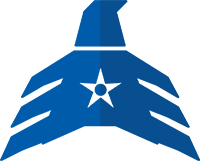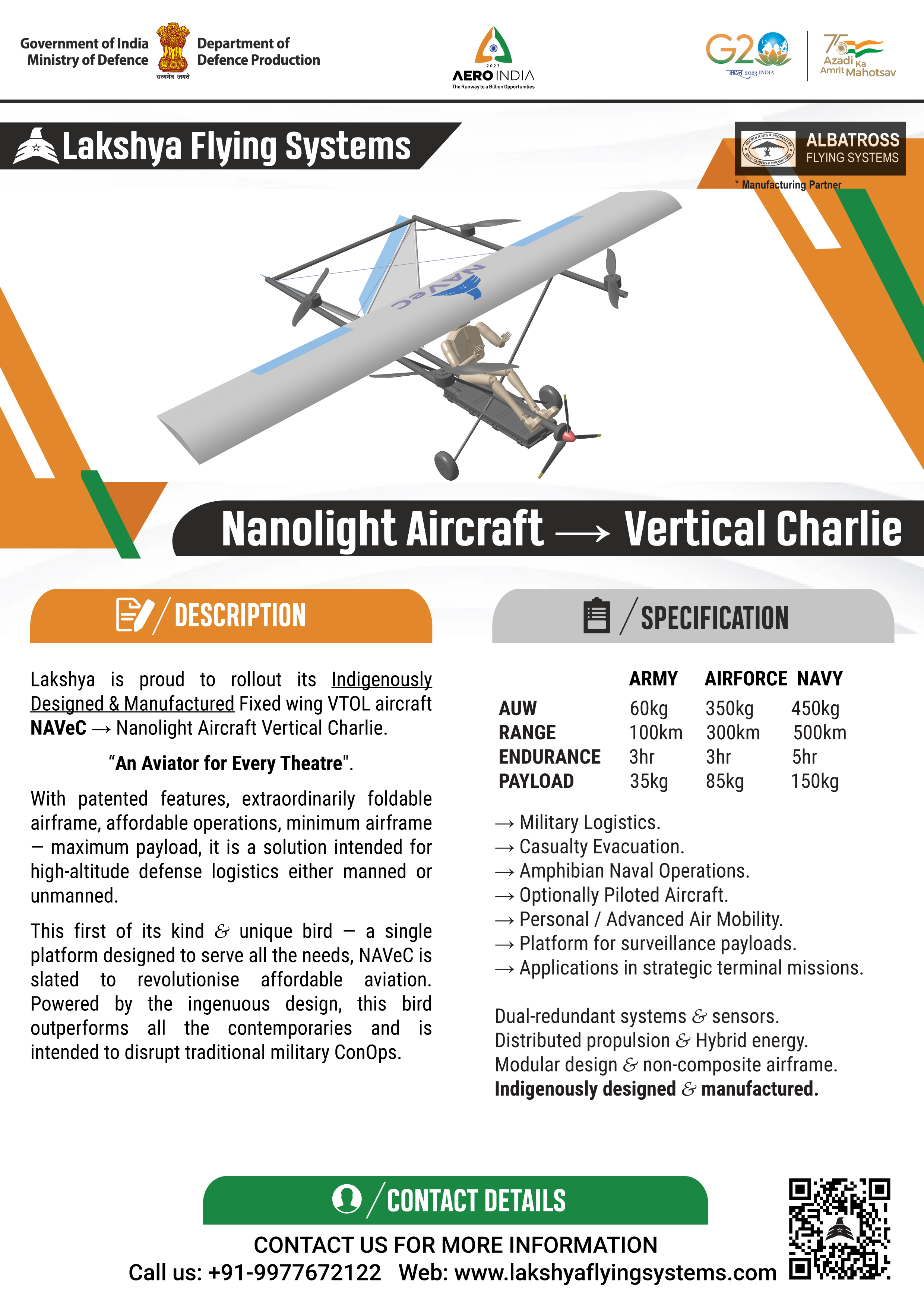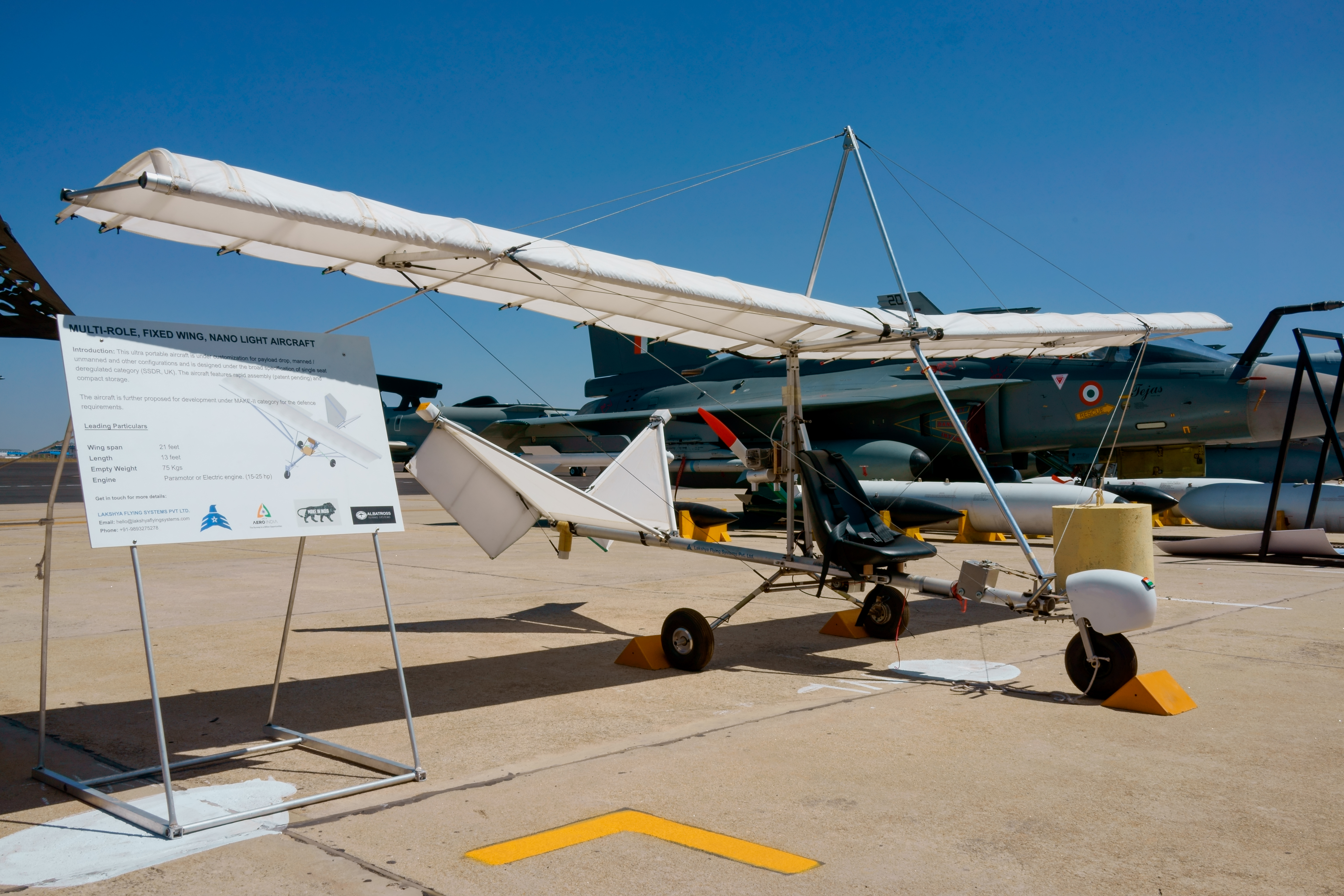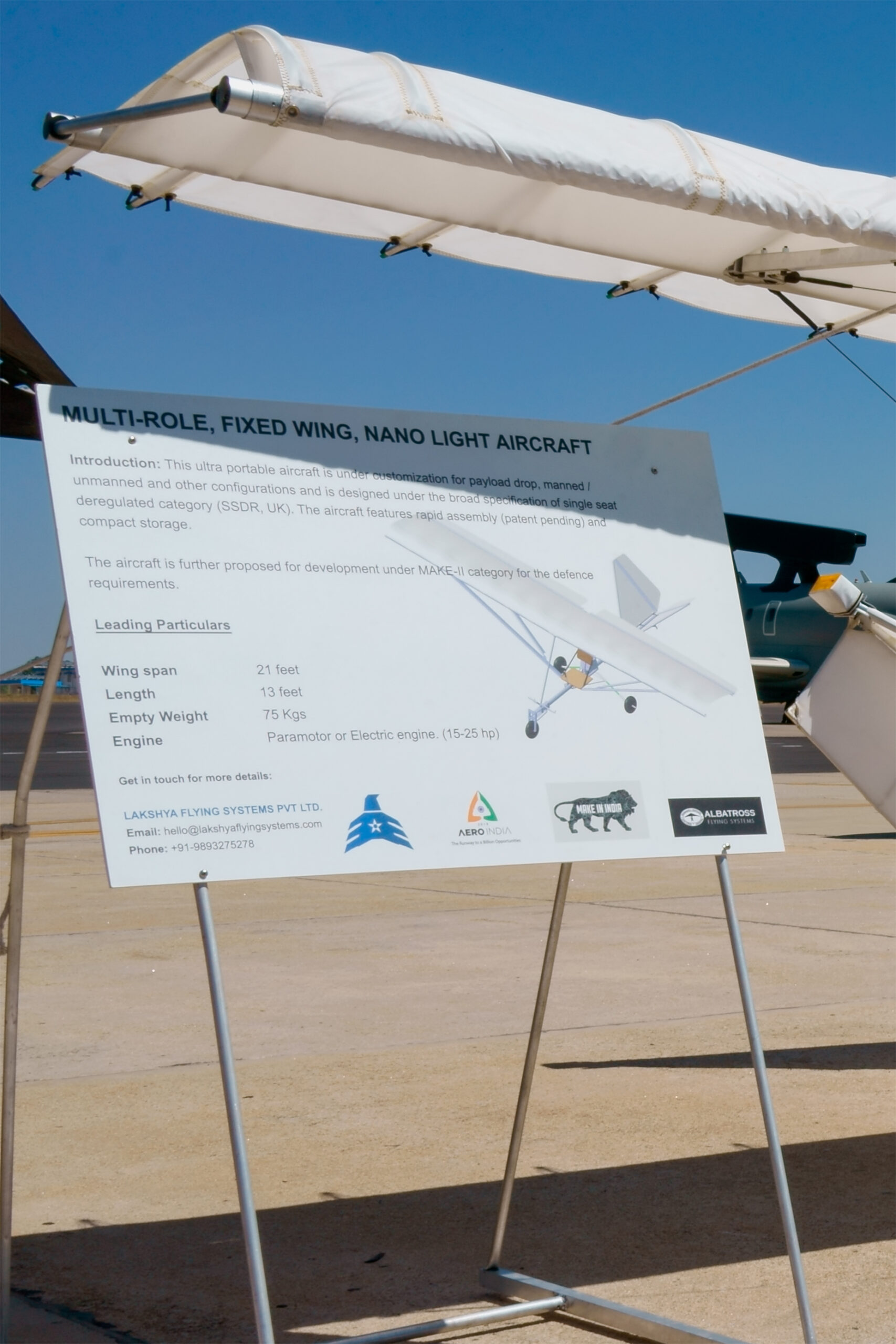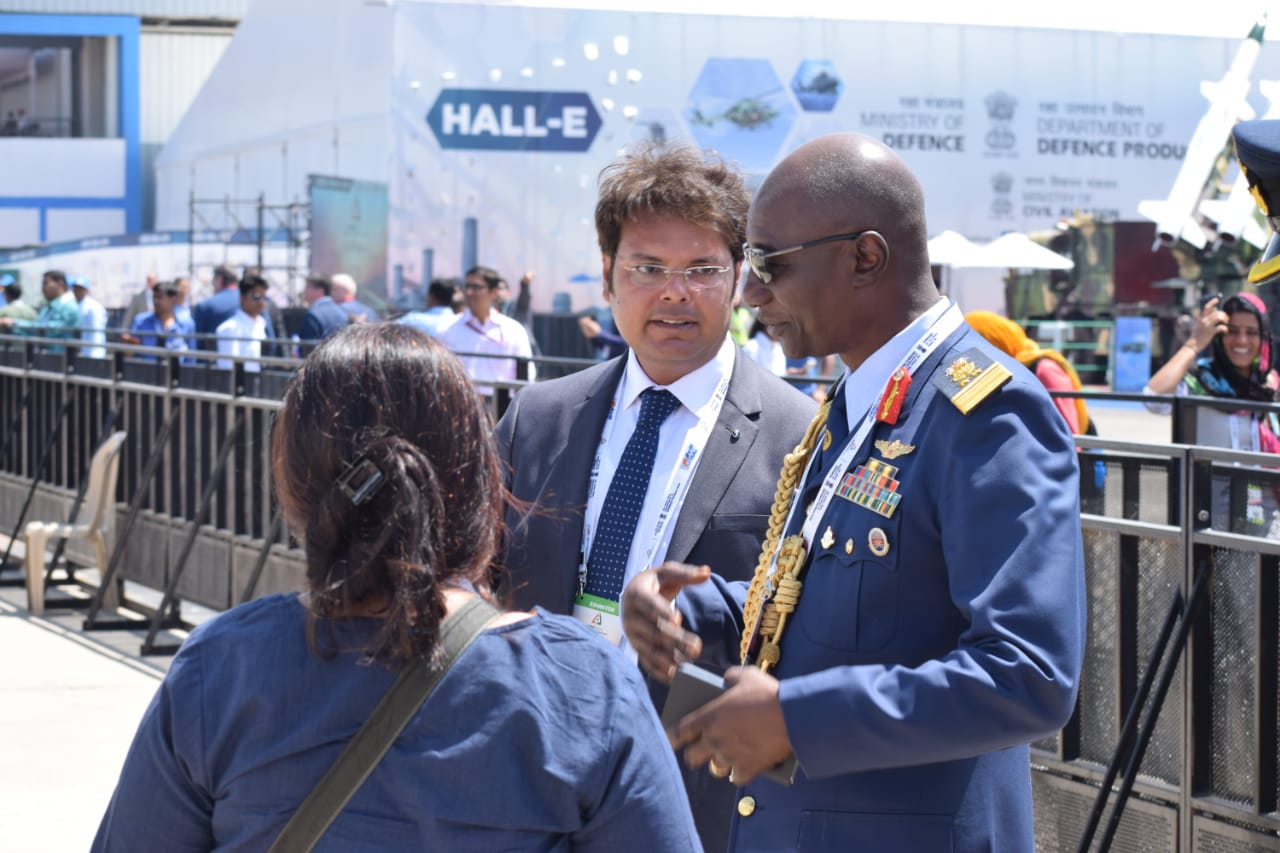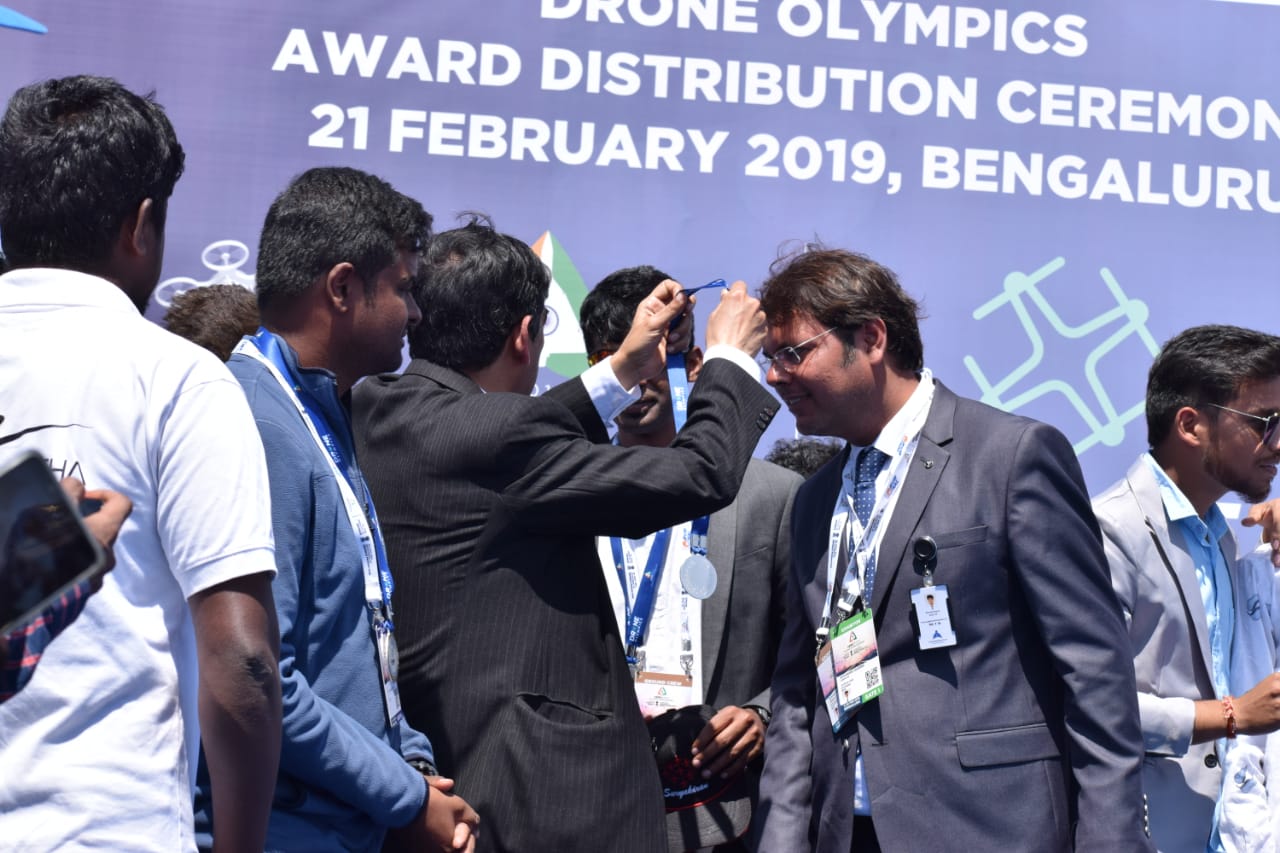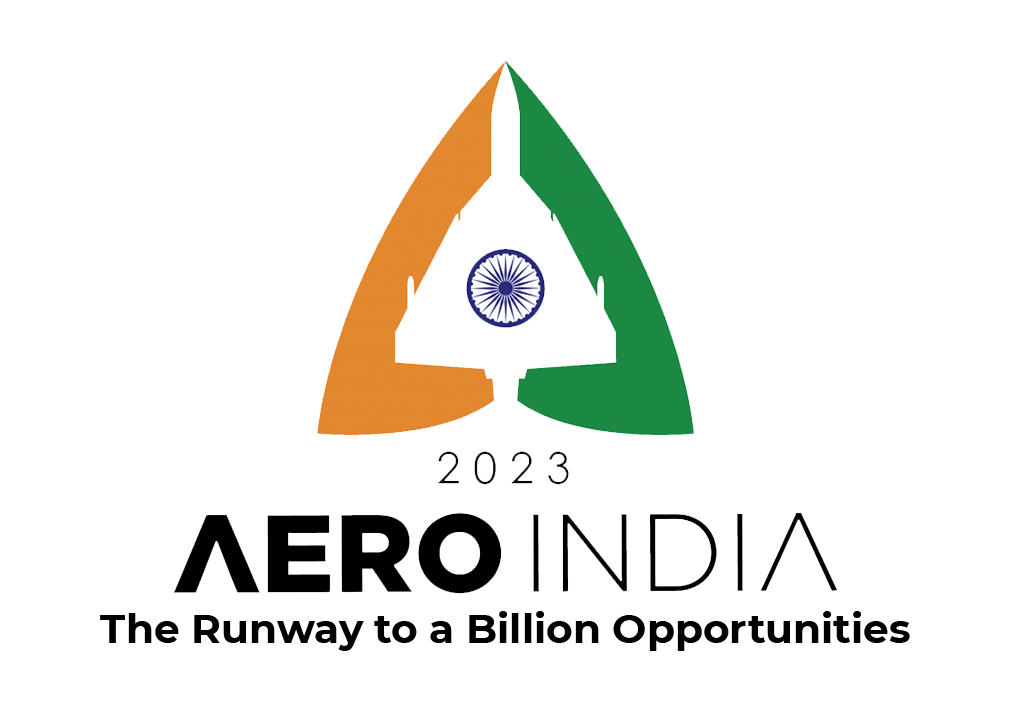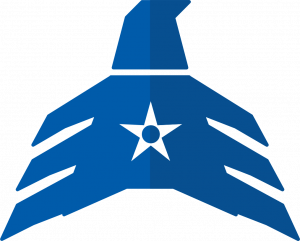The Indian Army in December 2022 released an RFI (Request For Information) for Logistic Drones:
RFI Title: REQUEST FOR INFORMATION (RFI) – LOGISTIC DRONES
Branch Name: Dte Gen of Sup and Tpt
Publish Date: 16 Dec 2022
Due Date: 10 Feb 2023
Lakshya’s Nanolight Aircraft Vertical Charlie was designed to solved these very specific challenges posed by standard altitude and high-altitude environments. Here’s a list of the key requirements as per the RFI:
- Payload — (High-Altitude): Between 20-40 Kg, (Standard Altitude): Between 40-80 Kg.
- Operational Altitude — (High-Altitude): 12000-18000 ft above MSL and achieve not less than 500m Above Ground Level (AGL). (Standard Altitude): Upto 12000 ft above MSL and achieve not less than 500m Above Ground Level (AGL).
- Temperature — (High-Altitude): -20° C to 45° C, (Standard Altitude): 0° C to 45° C
- Range: 10-20 Km
- Endurance: 45 minutes.
For now let’s just work with these basics and leave avionics for later.
Realising a high-altitude logistics aircraft poses several challenges. In order to appreciate the unique features of NAVeC, let’s try to recap the basics.
Challenges with High Altitude Drones
High altitude drones face several challenges that must be overcome to ensure their safe and effective operation. Some of the most significant challenges include:
- Battery Life: High altitude drones require a significant amount of energy to stay in the air for an extended period of time. Therefore, they need to have a robust battery system that can handle the increased power requirements.
- Atmospheric Conditions: As drones fly higher, they encounter different atmospheric conditions, including lower temperatures, increased winds, and decreased air pressure. These conditions can affect the drone’s stability, control, and overall performance.
- Navigation and Communication: High altitude drones often operate beyond the range of traditional communication and navigation systems. Therefore, they require specialized systems that can provide reliable communication and navigation in remote areas.
- Payload Capacity: High altitude drones are often used for scientific research, surveillance, and other applications that require specialized equipment. Therefore, they need to have a robust payload capacity that can carry these instruments safely.
Differences Between Quadcopters and Fixed-Wing Aircraft Architecture
Quadcopters and fixed-wing aircraft are two different types of unmanned aerial vehicles (UAVs) that have different strengths and weaknesses depending on the application.
Quadcopters, or multicopters, are rotary-wing UAVs that use multiple rotors to lift and maneuver. They have several advantages, including:
- Hovering capability: Quadcopters can hover in place, which makes them well-suited for applications such as aerial photography, mapping, and inspection.
- Maneuverability: Quadcopters are highly maneuverable and can perform complex aerial maneuvers, making them well-suited for applications such as search and rescue or surveillance.
- Vertical takeoff and landing (VTOL): Quadcopters can take off and land vertically, which makes them well-suited for operations in confined spaces or in areas without a runway.
Fixed-wing aircraft, on the other hand, are UAVs that use wings to generate lift and propulsion. They have several advantages, including:
- Longer endurance: Fixed-wing aircraft have a longer endurance than quadcopters and can fly for several hours or more, making them well-suited for applications such as aerial mapping, surveying, or monitoring.
- Greater range: Fixed-wing aircraft can cover larger distances than quadcopters, making them well-suited for applications such as search and rescue or border patrol.
- Higher speed: Fixed-wing aircraft can fly at higher speeds than quadcopters, making them well-suited for applications such as cargo delivery or transportation.
Specifically with respect to speed; speed is one of the most significant differences between quadcopters and fixed-wing aircraft. Generally speaking, fixed-wing aircraft are faster than quadcopters. This is because fixed-wing aircraft generate lift through the shape of their wings, which allows them to maintain a more streamlined profile and fly more efficiently.
Quadcopters, on the other hand, generate lift through their rotors, which can limit their top speed due to the amount of air resistance they generate. This means that while quadcopters are typically more maneuverable and able to hover in place, fixed-wing aircraft are generally faster and can cover larger distances more quickly.
Another difference between quadcopters and fixed-wing aircraft is their flight characteristics. Fixed-wing aircraft are designed to fly in a specific direction, and they require a runway or other flat surface to take off and land. Quadcopters, on the other hand, can take off and land vertically and are more agile, able to hover, and make sharp turns.
Overall, the choice between a quadcopter and a fixed-wing aircraft depends on the specific application and requirements. Quadcopters are typically better suited for applications that require precision hovering, maneuverability, and short-range operations, such as aerial photography, inspection, or search and rescue. Fixed-wing aircraft, on the other hand, are better suited for applications that require longer range, higher speed, and endurance, such as surveying large areas, cargo delivery, or long-range surveillance
Overall, the choice between a quadcopter and a fixed-wing aircraft depends on the specific application and requirements. Quadcopters are well-suited for applications that require hovering or maneuverability, while fixed-wing aircraft are better suited for applications that require longer endurance or greater range.
At Lakshya we are fans of Operational Superiority and we base our designs around time-tested, proven concepts that push the boundaries of what’s available or possible.
Here Comes NAVeC — Nanolight Aircraft Vertical Charlie
NAVeC is a hybrid quadcopter and a fixed-wing design that picks the best of a quadcopter and a fixed-wing architecture to achieve what’s been impossible for so long. Let’s look at the operational specs:
- All Up Weight (AUW): 60 Kg
- Range: 100Km
- Endurance: 3hr
- Payload: 35Kg
NAVeC — Nanolight Aircraft Vertical Charlie is a breakthrough, landmark design-feat for high-altitude Logistics. Built around a patented airframe-design, the achieved characteristics can be fine-tuned or altered based on operational requirements.
Unveiled at India Pavilion, Aero India 2023, NAVeC is at TRL 5-6 and is in the middle of ground and flight testing and had massive engagement during the show.
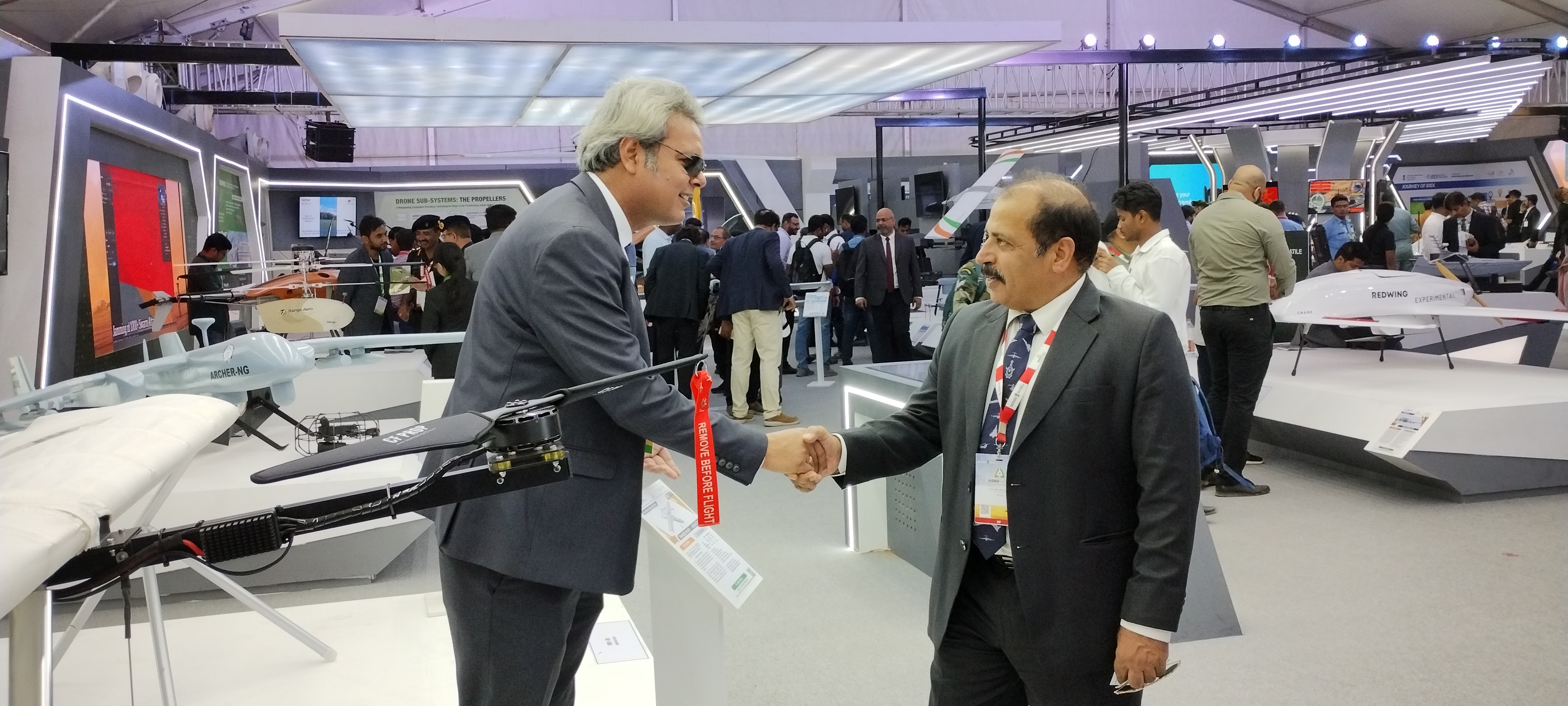
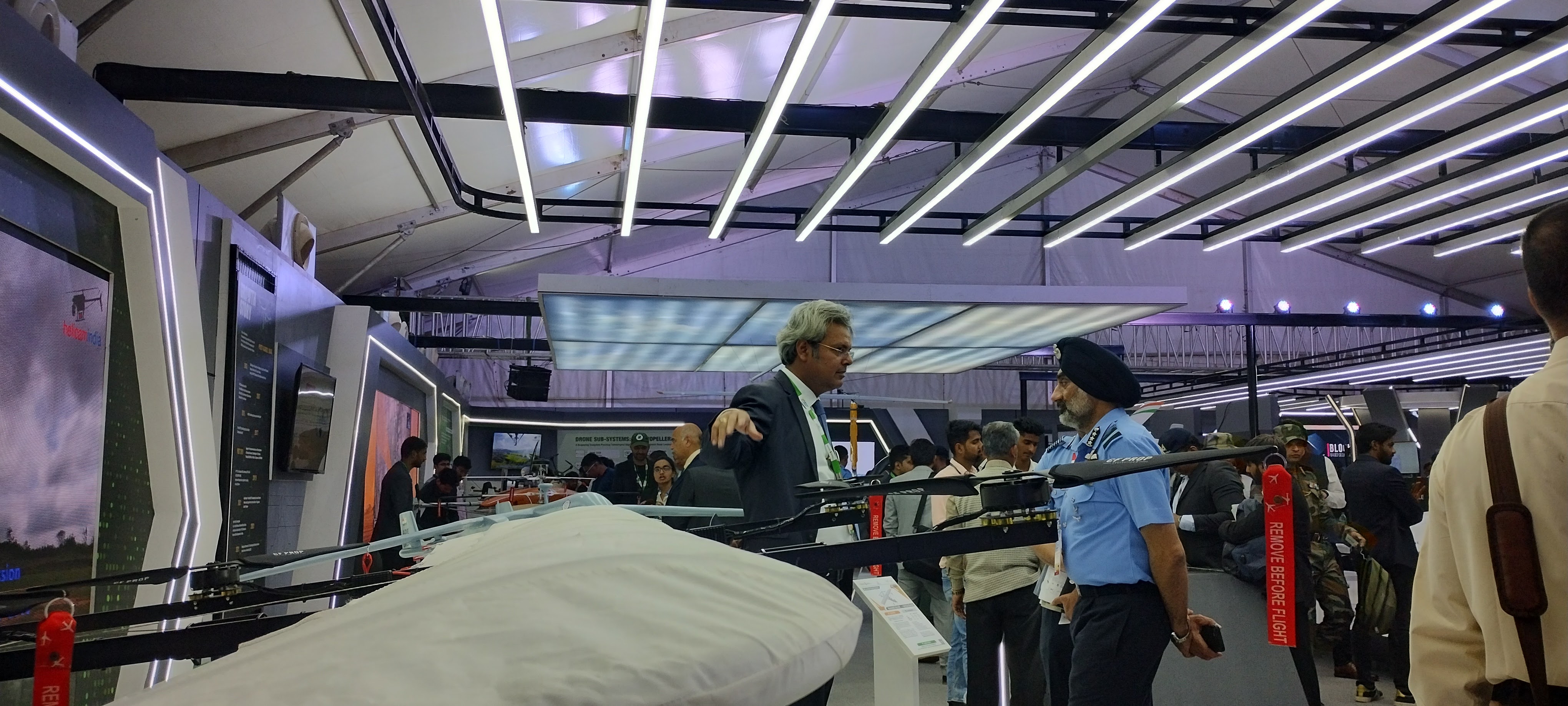
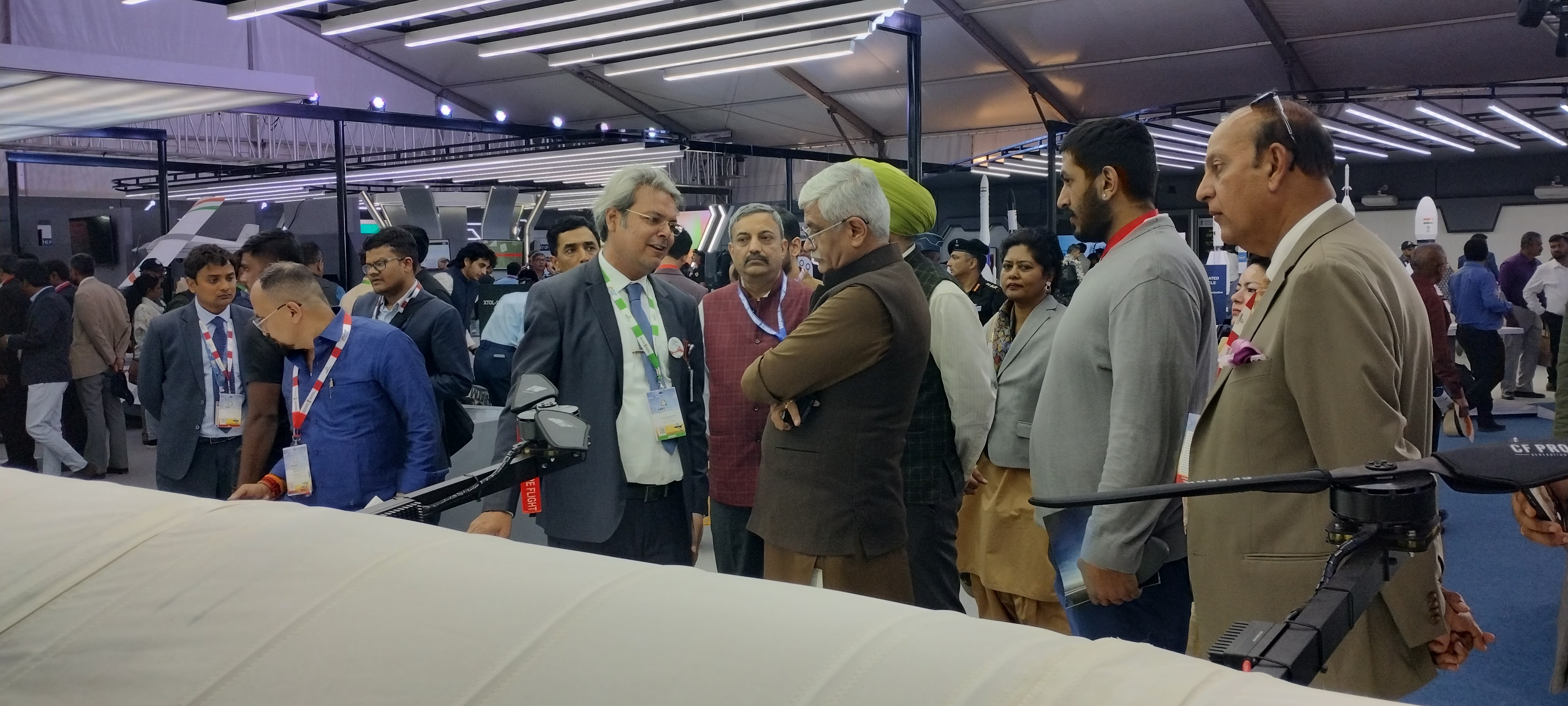
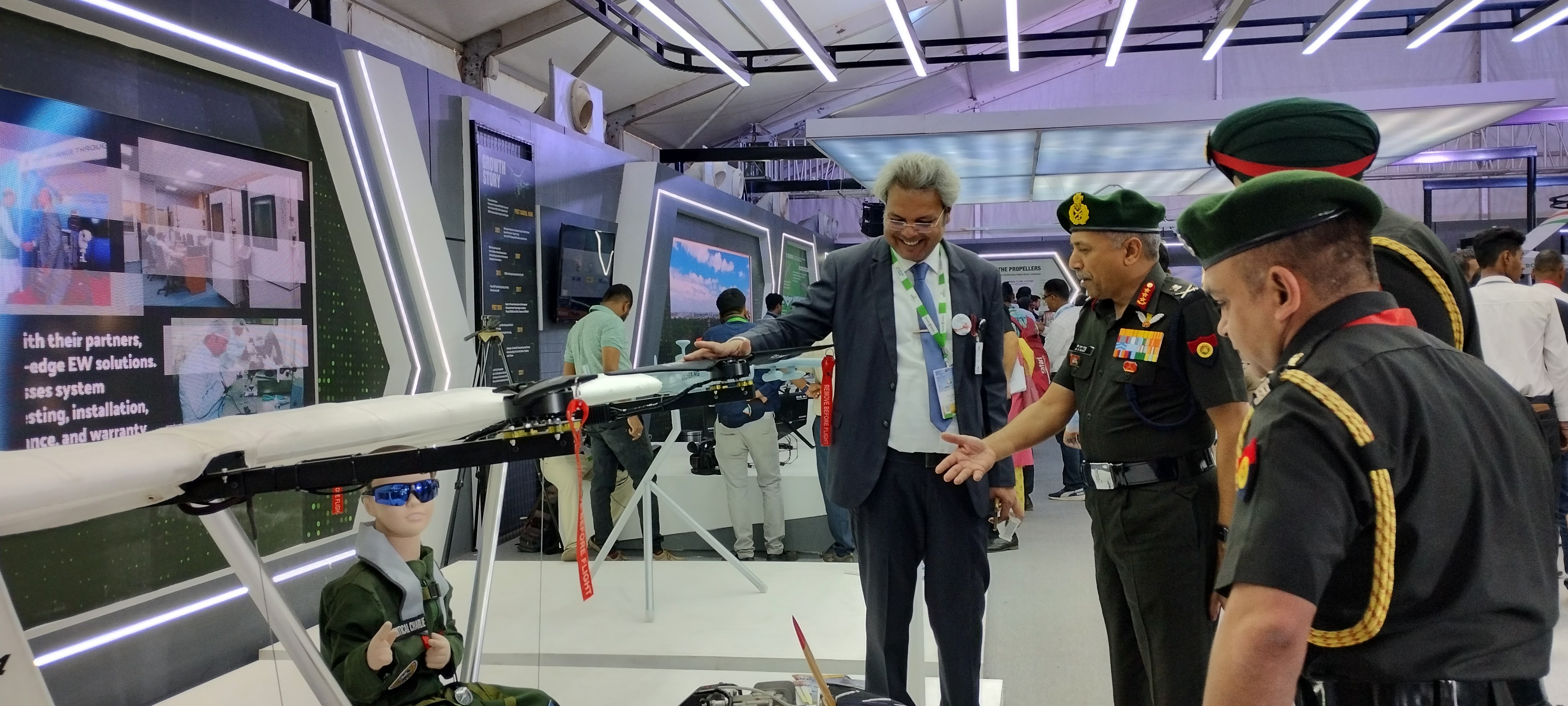
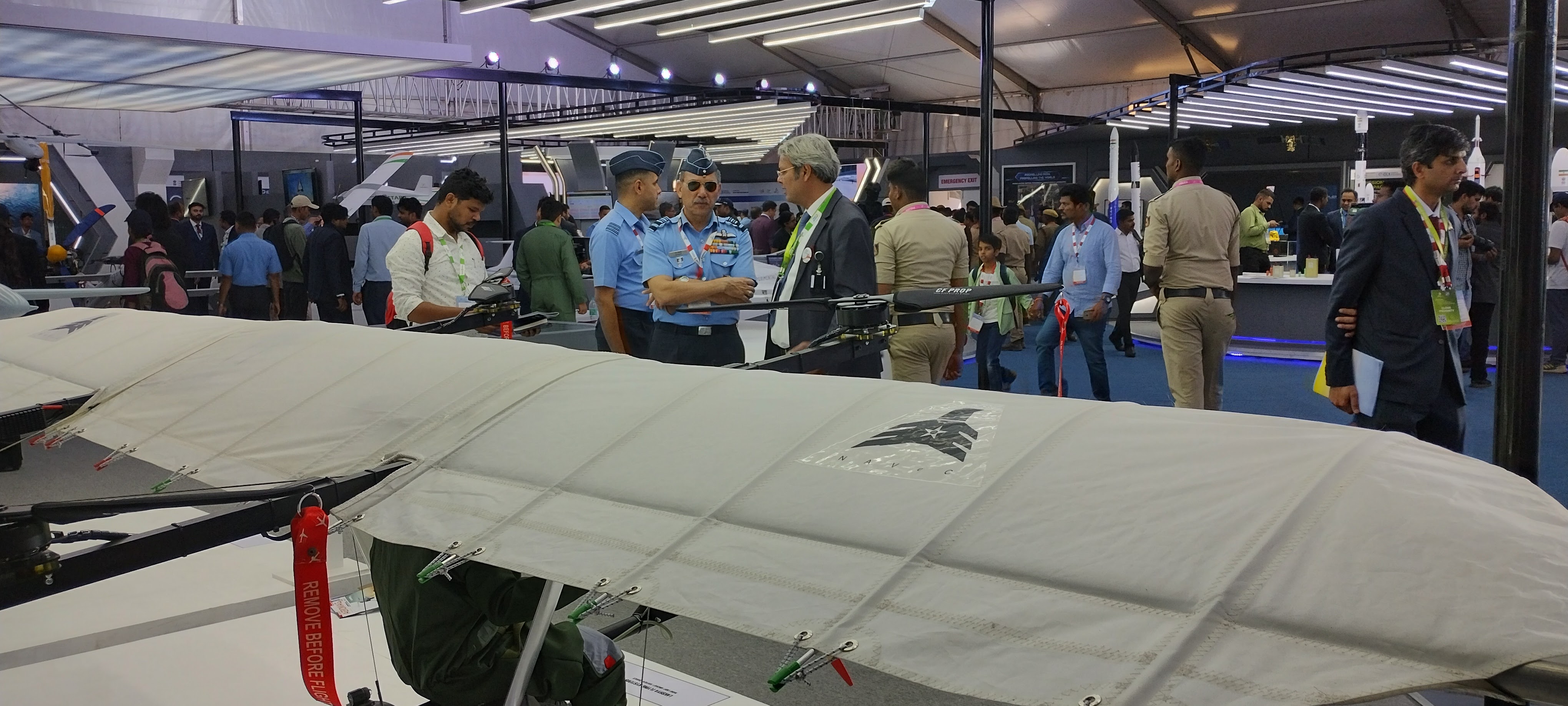
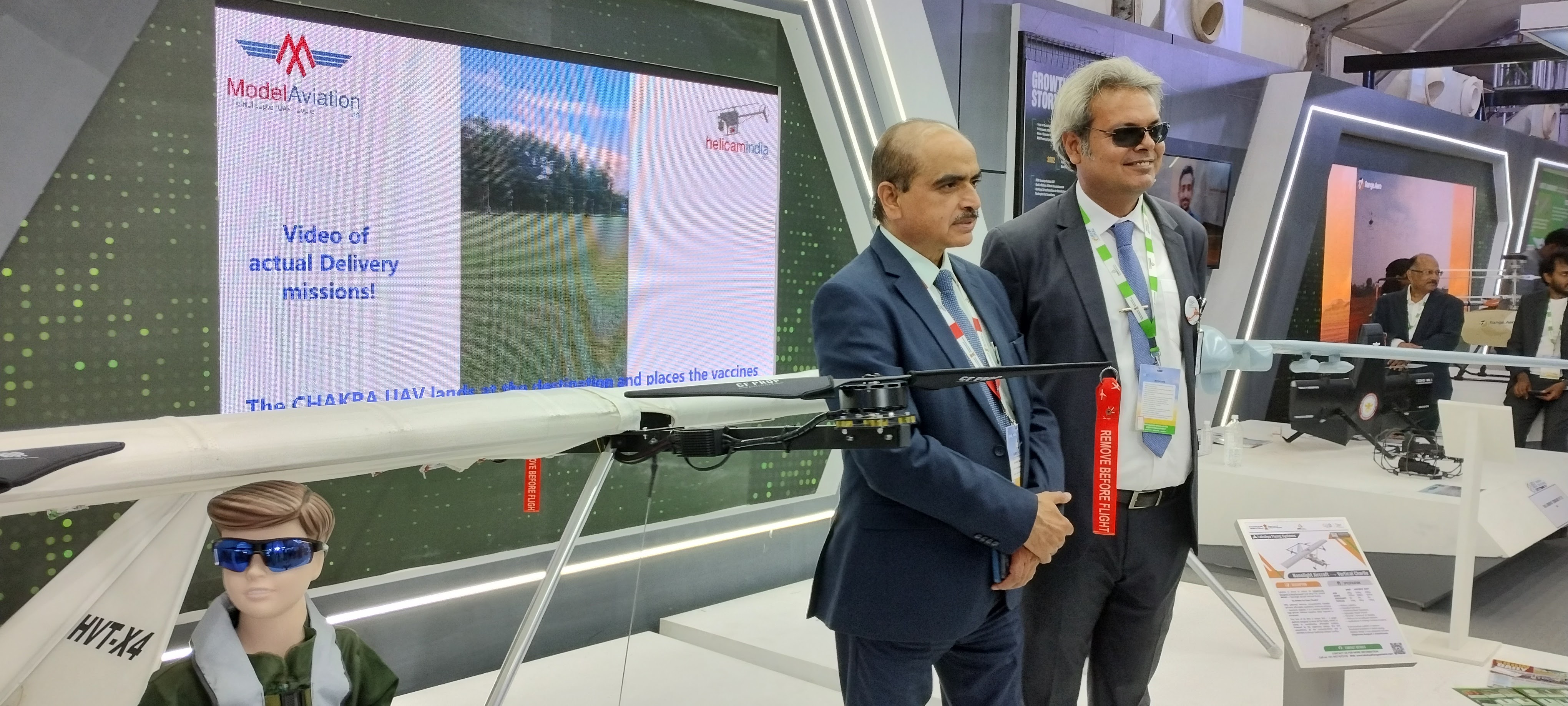
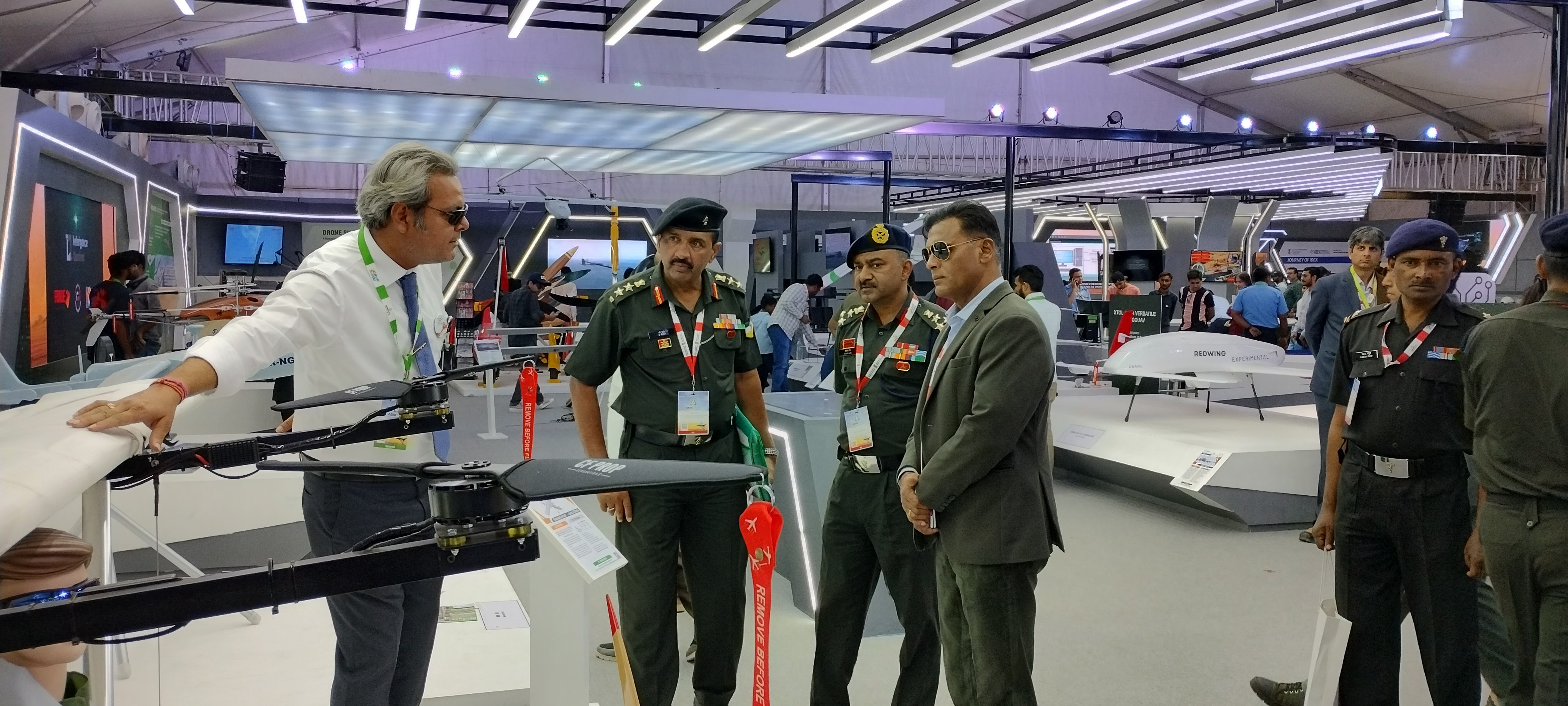
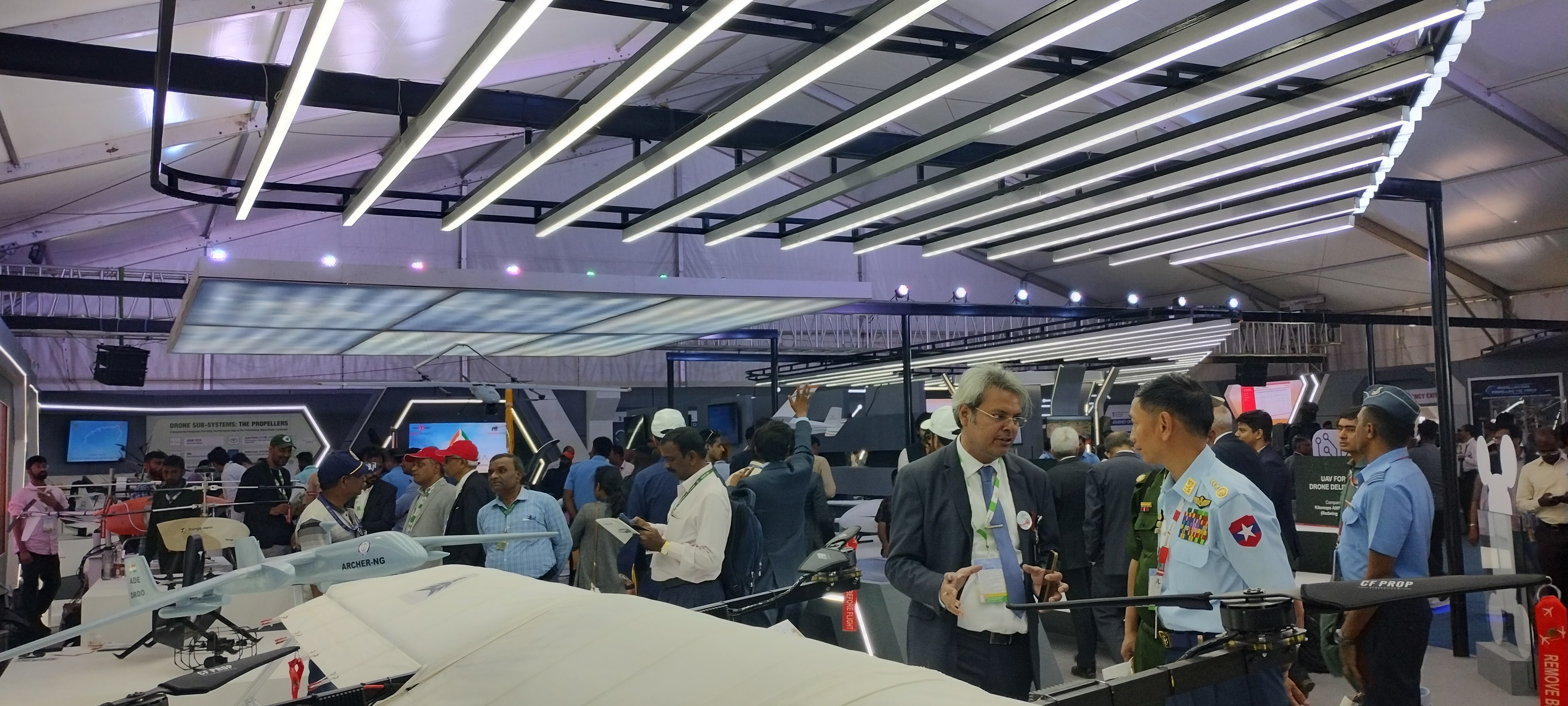
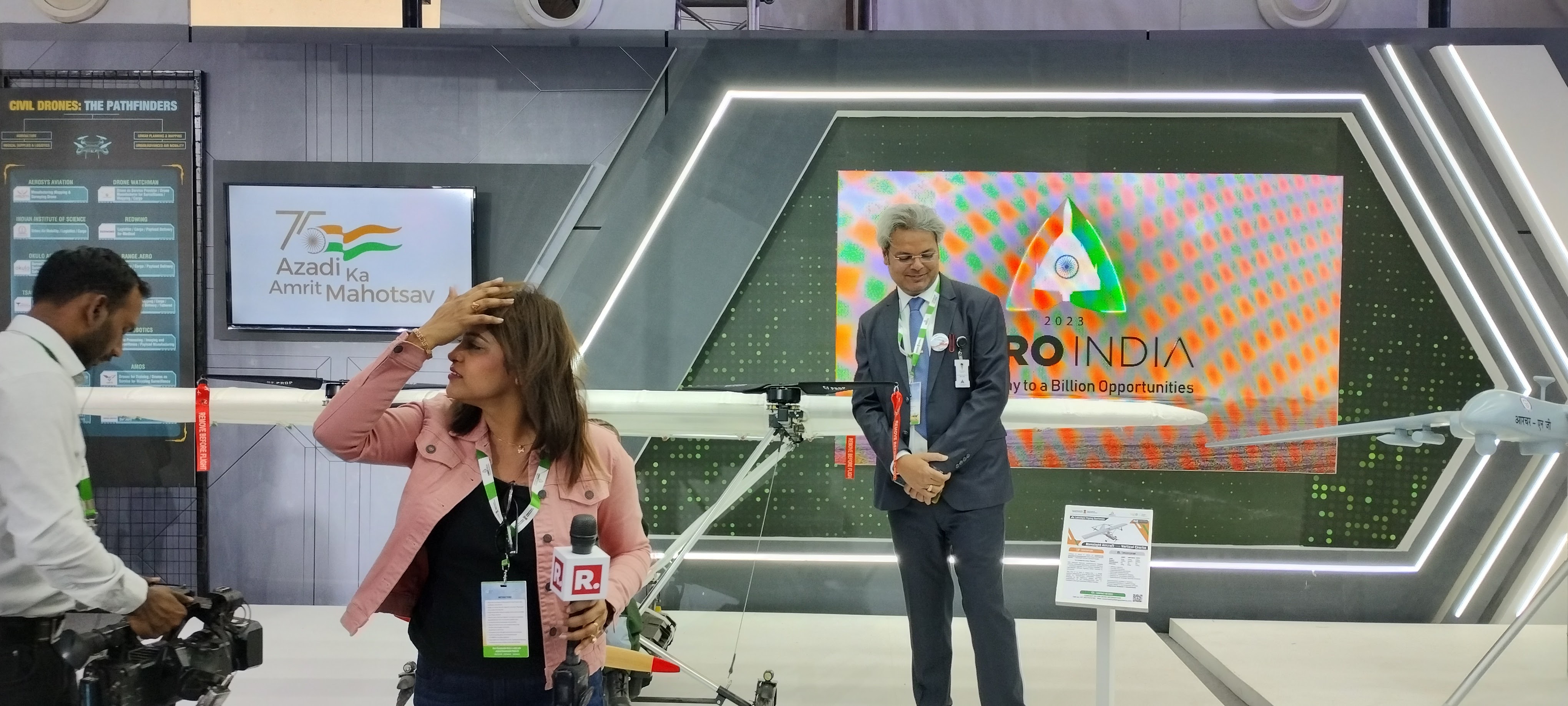

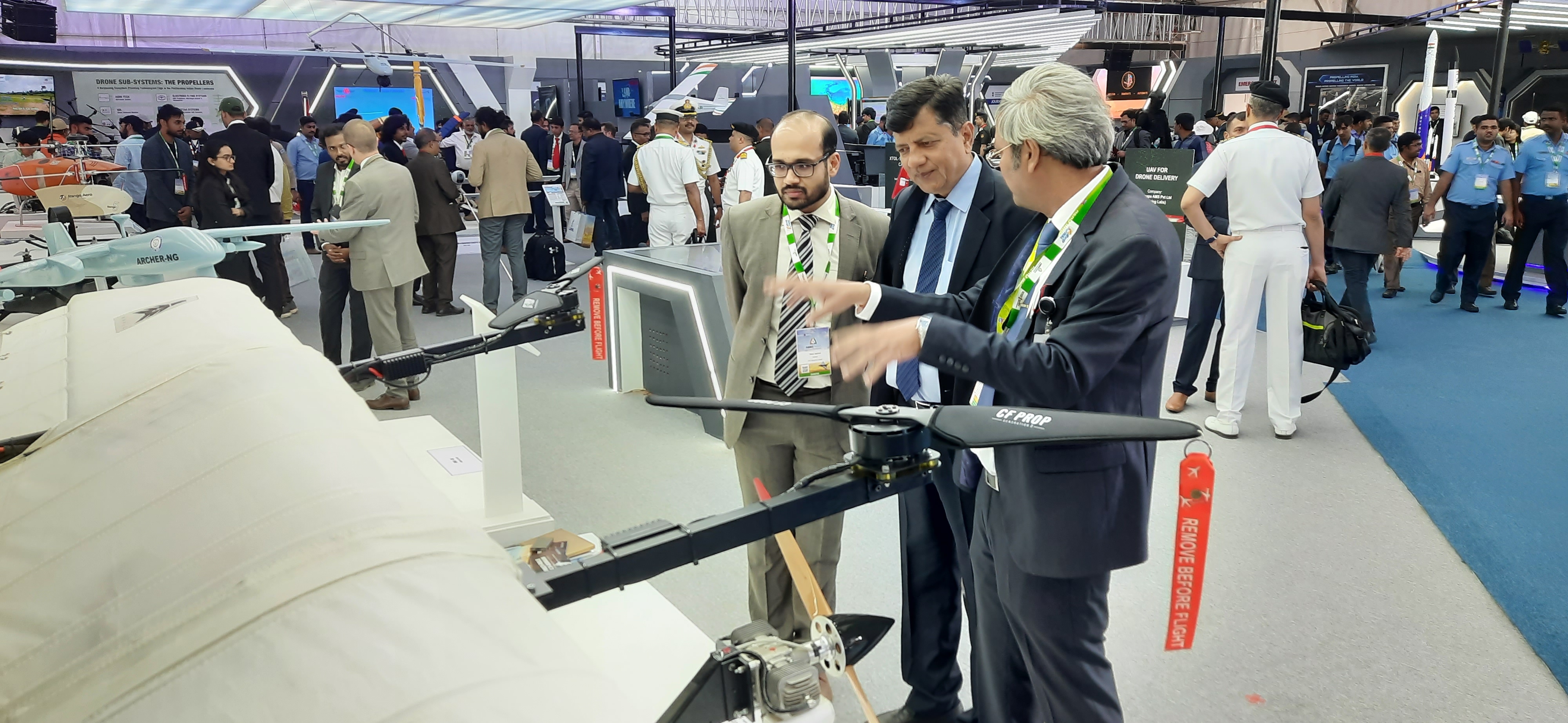
Watch this space for further updates.
